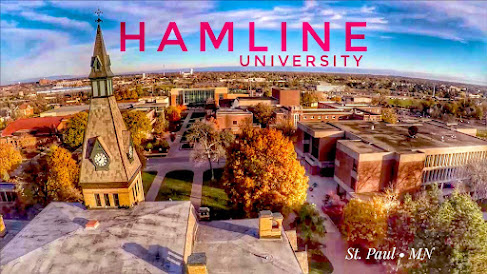Statement by Hamline University President Fayneese Miller, Ph.D. (Unedited)
January 11, 2023
My institution, Hamline University, a small liberal arts college located in St Paul, Minnesota, has been in the news lately. The New York Times ran an article leading with the headline, “Prophet Image Shown in Class, Fraying the Campus.”The article reports on an incident that occurred on our campus in October, where an adjunct instructor, teaching a class in art history, showed an image of the prophet Muhammad to a class attended by a number of Muslim students. And when a Muslim student objected to its showing, to quote the Times, the adjunct “lost her job.”
Various so-called stakeholders interpreted the incident, as reported in various media, as one of “academic freedom.” The Times went so far as to cite PEN America’s claim that what was happening on our campus was one of the “most egregious violations of academic freedom” it had ever encountered.
It begs the question, “How?” Because Hamline University is now under attack from forces outside our campus, I am taking this opportunity to comment upon, and in several important instances, correct the record regarding critical aspects of this incident -- both as reported in the press, and as shared by those who have been enjoined in the conversation about academic freedom.
First, I must state that the adjunct instructor hired to teach the course in art history did not “lose her job,” as has been reported by some outlets. Neither was she “let go” nor “dismissed,” as has also been reported. And most emphatically, she has not been “fired,” as has also been claimed.
The adjunct taught the class to the end of the term, when she, like all other faculty, completed the term requirements, and posted her grades. The decision not to offer her another class was made at the unit level and in no way reflects on her ability to adequately teach the class.
However, media coverage characterized the aftermath differently: reports were that the adjunct instructor was “dismissed” or “fired.” Fueled by commentary not well-informed on the particulars of this situation, we now find ourselves at the heart of a purported stand-off between academic freedom and equity. It has escalated to the point where I, members of my executive staff, other campus staff and, most sadly, one of our students now receive daily threats of violence.
To suggest that the university does not respect academic freedom is absurd on its face. Hamline is a liberal arts institution, the oldest in Minnesota, the first to admit women, and now led by a woman of color. To deny the precepts upon which academic freedom is based would be to undermine our foundational principles.
Prioritizing the well-being of our students does not in any way negate or minimize the rights and privileges assured by academic freedom. But the concepts do intersect. Faculty have the right to teach and research subjects of importance to them and to publish their work under the purview of their peers.
At the same time, academic freedom does not operate in a vacuum. It is subject to the dictates of society and the laws governing certain types of behavior. Imara Scott, in an April 2022 article published in Inside Higher Ed, noted that “academic freedom, like so many ideological principles, can be manipulated, misunderstood, and misrepresented…academic freedom can become a weapon to be used against vulnerable populations. Why? Because on the other end of a professor claiming academic freedom may be a student — a student who lacks tenure, who must rely on that professor for a grade and who may be emotionally, intellectually, or professionally harmed by the professor’s exercise of the power they hold.”
Also, the American Federation of Teachers correctly notes that “academic freedom and its attendant rights do not mean that ‘anything goes’”. It notes that “faculty must act professionally in their scholarly research, their teaching, and their interactions with students and…ensure this through policies and procedures that safeguard both students and the academic integrity of the institutions and disciplines”.
I ask those who presume to judge us the following questions: First, does your defense of academic freedom infringe upon the rights of students in violation of the very principles you defend? Second, does the claim that academic freedom is sacrosanct, and owes no debt to the traditions, beliefs, and views of students, comprise a privileged reaction? That is why Hamline’s Civility Statement, which guards our campus interactions, notes that any student, regardless of race, ethnic background, religion, or belief, deserves equal protection from the institution.
It is far easier to criticize, from the security of our computer screens, than it is to have to make the hard decisions that serve the interests of the entire campus community. What disappoints me the most is that little has been said regarding the needs and concerns of our students whom all members of our community hold in trust. I hope this changes.
I also note that Hamline is an independent university still closely affiliated with the United Methodist Church, and its foundational principles are inscribed in the oft-repeated words on our campus of John Wesley: “To do all the good you can, by all the means you can, in all the ways you can, in all the places you can, at all the times you can, to all the people you can, as long as ever you can.” We at Hamline live by these words.
To do all the good you can means, in part, minimizing harm. That is what has informed our decisions thus far and will continue to inform them in the future. We hope you understand and respect the values guiding our efforts.
Sincerely,
Fayneese Miller, Ph.D.
President

Comments
Post a Comment